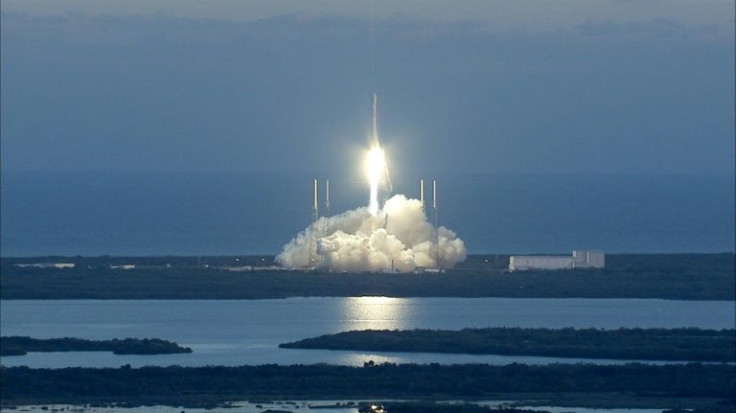NISAR: India-US Joint Mission Sees New Milestone, To Upgrade Bilateral Space Cooperation

KEY POINTS
- NISAR is the first space hardware collaboration between NASA and the Indian Space Research Organization
- The satellite on Monday emerged from a 3-week test conducted to evaluate its ability to function in a space-like environment
- India and the U.S. have been expanding their space cooperation in recent years
The NISAR satellite, part of an India-U.S. space collaboration mission, has passed a major milestone and is in the final stages of preparations for its launch in early 2024.
The Earth-observing radar satellite on Monday emerged from a 3-week test conducted to evaluate its ability to function in extreme temperatures and the vacuum of space. The satellite demonstrated its "hardiness" in a harsh, space-like environment, NASA's Jet Propulsion Laboratory said in a statement Tuesday.
NISAR, short for NASA-ISRO Synthetic Aperture Radar, marks the first space hardware collaboration between NASA and the Indian Space Research Organization.
The satellite is developed by ISRO and NASA to map the entire Earth in 12 days and consistently provide data to analyze changes in the planet's ecosystems, ice mass, vegetation, sea level rise, groundwater levels and natural hazards.
The flagship partnership is a major step forward in bilateral space cooperation between India and the U.S.
"We are so thrilled with the collaboration between NASA and ISRO on NISAR. This is the biggest collaboration on something technological between our two nations and certainly the biggest collaboration in the history of space exploration between the U.S. and India. I am sure this is the beginning of many more things to come," said Laurie Leshin, director of NASA's Jet Propulsion Laboratory.
"It is one thing to talk about it at a very high level and leadership talking about collaboration, but we have had 30 or 40 engineers at a time here in Bengaluru working shoulder-to-shoulder with their ISRO colleagues for over nine months," she said Tuesday.
Indian astrophysicist Sandip Chakrabarti said it appears India is going "back to [the] American block again" in its space exploration journey.
"India and U.S. collaboration is most natural as both have similar cultural, scientific and democratic values. So this type of collaboration would be very important," Chakrabarti told International Business Times. "Indeed, India started with American Apache Rockets in the early 1960s, but Soviet influence, Sarabhai and Bhabha's demise, took her away from American block and it is good that it is back to [the] American block again."
International cooperation has been a hallmark of India's space program, which began in the 1960s when the South Asian country had limited resources.
Much of the early success of India's space program was a result of the aid and assistance provided by both the U.S. and the former Soviet Union during the peak of the space race. India played its non-alignment card and maintained a fine balance to keep good relations with both superpowers.
As it was growing as a stable democracy in the late 1950s and early 1960s, Indian scientist Vikram Sarabhai began sowing the seeds for India's own space program.
The country brought cold-war enemies together for the launch of a sounding rocket in 1963 – the Nike-Apache rocket was made in the U.S., the sodium vapor payload was brought from France and the Soviets gave a Mi-4 helicopter for range clearance.
The Nike Apache rocket, launched from the shores of India's west coast on Nov. 21, 1963, marked the beginning of the country's space program.
India's first significant collaboration with the Soviet Union came in 1970 after New Delhi agreed to launch M-100 rockets every week in sync with Russian sites to simultaneously gather data on meteorological forecasts. More than a thousand M-100 rockets were launched by India between 1970 and 1993.
India's first satellite, Aryabhata, which was launched in 1975, received technical assistance and components from the Soviets.
Collaborations with both the U.S. and the Soviet Union have helped India build a formidable space program over the last few decades.
However, much has changed in the world of space exploration and geopolitics. Some believe India may be leaning more toward a Western alliance today for space exploration over a China-Russia-led association.
This year, India signed the NASA-led Artemis Accords, which lays down a framework for space cooperation and lunar exploration plans among participating nations. The accord currently excludes China and Russia – both have expanded their own bilateral cooperation on space exploration over the years.
Much of what India's space program has in the works, such as human missions, setting up a space station and planetary explorations, have already been achieved by the U.S., China and Russia. So, being part of a U.S.-led alliance could help it launch itself ahead in the new age of space exploration.
"One of the reasons why India is behind NASA in space exploration is that from the beginning, it concentrated on remote sensing, exploration of resources, reaching out to remotest places by IRS, INSAT, EDUSAT missions etc. And made great progress too! NASA is exploiting this aspect of ISRO's experience," Chakrabarti said.
"Furthermore, to do a real good job in space, no single country's budget would be enough. So the prospect of joint ventures, in cash and kind would be the norm rather than an exception. A third point is if India has detailed information about the resources available at other nations, including its enemies, it can use them to orient itself for its geopolitical gains," he added.
As part of India's growing space cooperation with the U.S., the two countries have also agreed upon different partnerships under the iCET (initiative on Critical and Emerging Technologies). They include strengthening human space flight cooperation, collaborating in the commercial space and identifying new talent and expanding exchange programs.
© Copyright IBTimes 2024. All rights reserved.






















